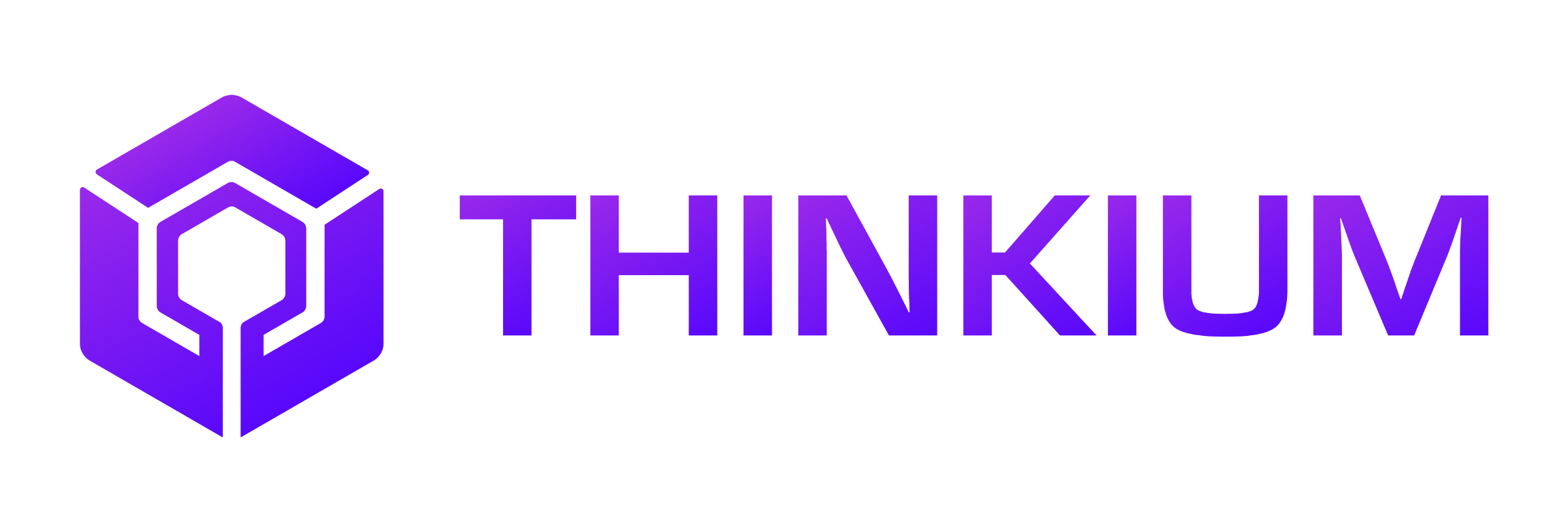基金会官宣 3——看太空猫如何打破技术壁垒!

“我们想要的是一个每秒能够处理成千上万笔交易,并且具有相同去中心化水平、可靠安全的区块链。”
近几年,“区块链”变成热议词,许多人的关注点,无不在“区块链的理论能否实现”、“相关应用能否落地”上面。
虽然,这些问题确实是区块链行业的“重头戏”。
但是,我们偶尔还是要将眼光移回到区块链的底层技术发展上。毕竟,万变不离其宗,技术的进步和精进才是区块链发展更高更远的基础。
每一项新技术都面临进入壁垒期,每一个区块链应用都会面临各种挑战。
今日,猫仔带大家看看,Thinkium 基金会对于“太空猫公链打破区块链技术壁垒”是如何解释的。
主流公链所面临的底层基础设施挑战

毫无疑问,区块链技术具有巨大的潜力。
“去中心化交易所、市场预测、资产管理等平台,是区块链开发人员正在探索、令人兴奋的应用程序。”
诸如此类的话术,便足以通过 ICO 募集到数十亿美元资金,足以推动 2017 年数字货币的价格大幅增长。
是的,炒作是真实存在的。
而上面那句话,有一个重点并没有提及到:区块链目前存在几个主要技术壁垒,使得它无法真正的被大范围使用。
当然,我们也相信,这些壁垒都会被解决。但是,作为开发者和投资者,我们都必须现实一些。
现实情况是,“去信任系统”(Trustless System)可能还需要很多年,才能被大规模被用于主流市场。
去信任系统指的是:系统中所有节点之间无需信任也可以进行交易。因为数据库和整个系统的运作是公开透明的,在系统的规则和时间范围内,节点之间无法欺骗彼此。
这些技术障碍包括:无法无限可扩展、隐私保护的限制、缺乏合约的形式化验证、储存有限、不可持续的共识机制、缺乏治理和标准、缺乏开发工具、量子计算威胁等等。
在这篇文章中,我们将介绍这些技术障碍,并分享克服这些技术障碍的解决方案示例。
作为开发者,我们的注意力应从 ICO 募集资金,转移到克服区块链技术壁垒中去。
性能局限性

目前大部分主流公链的共识协议都具有同样的局限性,即网络中的每个节点都必须处理每笔交易。
区块链的本质是“去中心化”,意味着没有中心平台来保护、维护系统。取而代之的是,网络中的每个节点需要通过处理每笔交易和存留交易副本,来维护整个公链网络系统。
尽管去中心化共识机制为我们提供了几大核心优势:安全可信、政治中立、抵制审查等。但这些是妥协了可扩展性这一特性换来的。去中心化将区块链可以处理的交易笔数,限制为网络中参与节点的数量。
这里包含两个意思:
(1)低吞吐量:区块链可以处理交易数量十分有限;
(2)缓慢的交易速度:处理一个区块的速度较慢。比特币需要 10 分钟,以太坊需要大约 14 秒。遇到交易高峰期,等待时间会更久。而 Square、Visa 等服务的交易几乎是实时确认的。
公链需要在“低吞吐量”和“中心化”之间做出权衡。
随着区块链规模的扩大,节点对存储、带宽和计算能力的要求随之增加。慢慢地,会变成只有少数几个节点能够处理这些区块,长期以来会带来“中心化”风险。
到那时,局面会发生 360 °翻转,我们又回到需要信任一些中心化平台的时代。但是,我们真正想要的是一个每秒能够处理成千上万笔交易,并且是去中心化的区块链。
Thinkium 如何解决可扩展性问题?
(1) 打破区块链的“不可能三角”

Thinkium 采用多链分层多级系统架构、基于 PoS 的随机选举机制、TBFT、跨链、链内分片和多链并行设计等机制,从根本上解决了区块链行业所谓的“不可能三角”问题。
性能无限可扩展:在确保去中心化性和一致性的条件下,随着节点数量的增加,Thinkium 系统的性能可以无限扩展,从而能够支撑大规模用户可使用的应用场景。
完全去中心化:允许共识节点未经许可,即可加入 Thinkium 网络,不存在所谓的超级节点。
数据一致性:在恶意节点攻击的条件下,Thinkium 节点依旧可以达到共识结果。
(2)公链联盟链可信融合

借助 Thinkium 底层设施,商业主体可以根据自身需要,进行业务拆分,将一部分必须严格保密业务放在可信的「联盟链」中,将另一部分需要更大范围流通的业务放到「公链」中。这样的业务拆分可以同时满足「保密」和「价值流通」的需求。公链和联盟链亦可以根据业务调整进行切换,实现可信融合。
内容未完待续,敬请期待……
只有区块链的底层基础设施足够强大,区块链才能更好的为其他行业赋能,才能够支撑大规模应用的开发与运行。
而太空猫公链从设计之初,就致力于成为整个区块链的底层基础设施。
太空猫公链解决了区块链的“不可能三角”问题,是“公链上的 King",能够实现性能无限可扩展、真正去中心化、安全可信。此外,它还具有复杂合约高并发、公链联盟链可信融合、允许行业公链在其链上搭建与运行等技术优势。
太空猫公链将凭借其独特的技术优势和稳定健康的发展路线,有效解决现主流公链所遇到的底层基础设施技术难题,成为首个能够支撑上千万上亿级用户规模应用场景的最强公链,真正推动区块链行业向前发展!
原文如下:
Fundamental challenges with public blockchains & Thinkium solutions
There’s no question that blockchain technology has enormous potential.
Decentralized exchanges, prediction markets, and asset management platforms are just a few of the exciting applications being explored by blockchain developers.
Exciting enough, in fact, to raise over billions in ICOs and drive massive price rallies throughout 2017. The hype is real.
However, there’s a flipside to this story that isn’t getting enough attention: blockchains have several major technical barriers that make them impractical for mainstream use today.
I believe that we will get there, but we need to be realistic as developers and investors. And the reality is that it could be many years before trustless systems are ready for mainstream use at scale.
Some of these technical barriers include:
Limited scalability
Limited privacy
Lack of formal contract verification
Storage constraints
Unsustainable consensus mechanisms
Lack of governance and standards
Inadequate tooling
Quantum computing threat
… and more.
In this post, I’ll walk through these technical barriers and share examples of solutions for overcoming them.
As developers, I believe it’s critical that we shift some of our focus away from shiny new ICOs to the real technological challenges standing in our way.
NOTE: There’s no way I can cover every problem and every solution out there, but I covered the ones I’m most familiar with. Please refrain from too harshly criticizing me for not including something. I’d love for you to post anything I missed in the comments and I’ll add it if I see fit :) … And if I’ve made any mistakes or wrong assertions, please let me know!
Limited scalability
Currently, all public blockchain consensus protocols have a challenging limitation: every fully participating node in the network must process every transaction.
Why? Well, recall that blockchains are fundamentally “decentralized” — which means that no central party is responsible for securing and maintaining the system. Instead, every single node on the network is responsible for securing the system by processing every transaction and maintaining a copy of the entire state.
While a decentralization consensus mechanism offers us the core benefits of blockchain that we all care about — security guarantees, political neutrality, censorship resistance, etc. — it comes at the cost of scalability, since decentralization by definition limits the number of transactions the blockchain can process to the limitations of a single fully participating node in the network.
Two practical implications here:
Low throughput: Blockchains can only process a limited number of transactions
Slow transaction times: The time required to process a block of transactions is slow. For example, Bitcoin block times are 10 minutes, while Ethereum block times are around 14 seconds. These times are even longer during peak moments. Compare that to the nearly instantaneous confirmations you get when using services like Square or Visa.
As a result, public blockchains are forced to make a tradeoff between low transaction throughput and high degree of centralization.
In other words, as the size of the blockchain grows, the requirements for storage, bandwidth, and compute power required by fully participating nodes in the network also increase. At some point, it becomes unwieldy enough that it’s only feasible for the few nodes that can afford the resources to process blocks — leading to the risk of centralization.
At that point, we’ve made a full 360-degree turn and gotten back to a centralized system that requires trust in a few big players, whereas what we want is a system that handles thousands of transactions per second with the same levels of decentralization that cryptocurrency originally promised to offer.
Thinkium Solution
Thinkium uses a multi-chain layered multi-level system architecture, PoS-based random election, TBFT, cross-chain, intra-chain sharding, and multi-chain parallel computing to fundamentally solve the “impossible triangle” problem of the blockchain.
Infinite and scalable performance: Under the condition of ensuring decentralization and consistency, as the number of nodes and chains increases, the performance of the Thinkium system can be infinitely extended, supporting use case scenarios that require a large number of users and application operations.
Completely decentralized: Allow consensus nodes to join the Thinkium network without permission, and there are no super nodes.
Data consistency: Under the condition that malicious nodes are allowed, Thinkium nodes can reach a consensus result.
Fusion of Public and Consortium Chain
With the underlying technology of the Thinkium blockchain, enterprises can split their business data and logic according to their requirements. They can keep confidential parts into a trusted consortium chain and open another part of the business that requires sharing to the public chain. Thinkium supports both business confidentiality and value circulation. Business can easily adjust the split between the public chain and the consortium chain when needed.
Part 2 to follow...
文章版权归太空猫社区联盟所有,未经许可不得转载,如需转载请联系太空猫仔。
图片来源:
1. https://hackernoon.com/the-blockchain-technology-of-2018-or-not-c375eab5d46a












评论